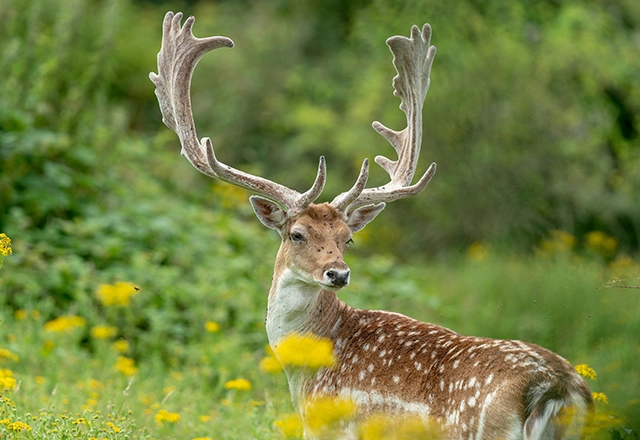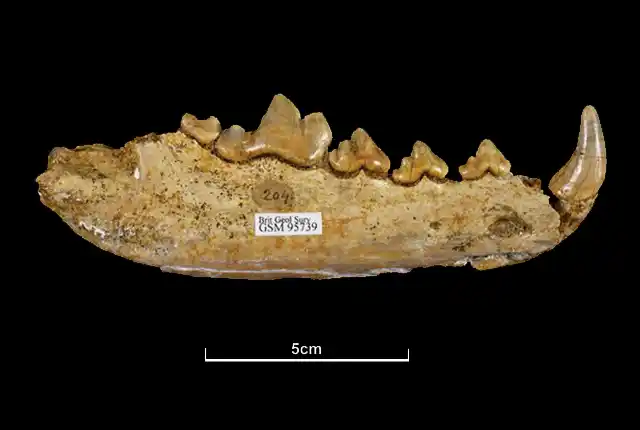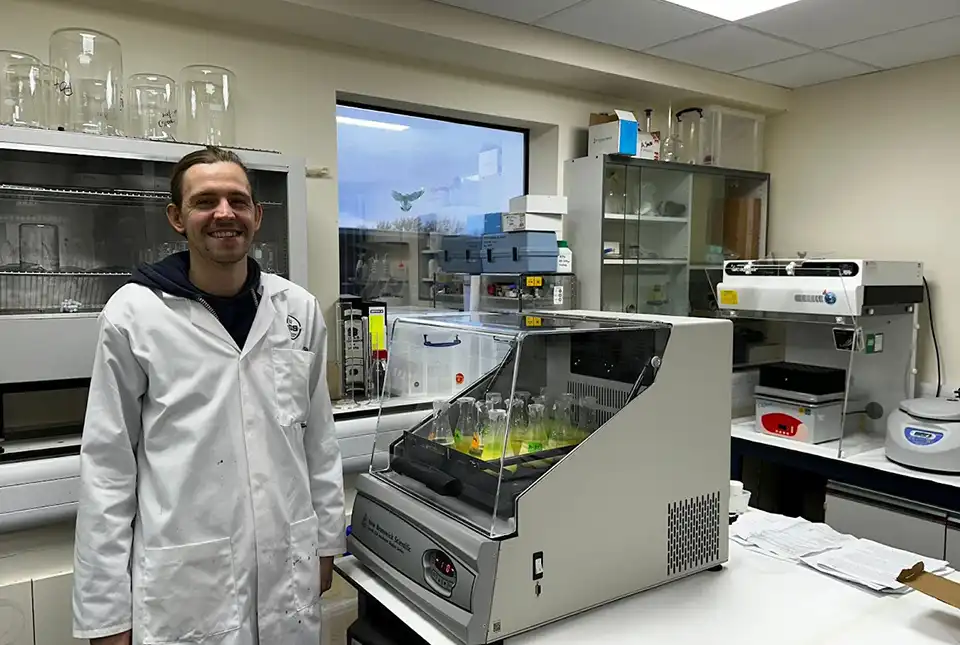Laboratory life: my work experience week at BGS
Aspiring astrophysicist Riveen Pehesara Kumanayaka shares his experience following an A-level work placement with BGS.
20/08/2024 By BGS Press
My week began with a welcome tour of the research facilities at BGS and, more specifically, the geochemistry laboratories. The team provided an introduction to the field of mass spectrometry and the use of isotopes in archaeological research. The sample preparation, which happens under very precise, controlled conditions to exclude contamination, involves a huge amount work prior to analysis. It wasn’t long before I was gaining hands-on experience working with carbon isotopes from organic and inorganic materials, preparing samples and then analysing them on mass spectrometers. For me, one of the highlights was learning how to handle samples down to 40 micrograms in weight — which I can confirm is difficult to see with the naked eye!

Visiting the BGS Keyworth site laboratories. © Riveen Pehesara Kumanayaka.
Geoarchaeology
Dr Angela Lamb is well known for being one of the leading geochemists on the research into and analysis of King Richard III’s remains. She took the time to talk to me about the relevance and application of geochemistry in archaeological contexts. In relation to King Richard III, her detailed analysis has revealed various fascinating details about his life, for example that he lived in different locations through his childhood and into his adult years. Bones in our bodies reflect our diet and location (due to the underlying geology that creates different soil chemistries in different areas) and this type of analysis has been used in countless archaeological investigations — as featured in the TV programme Digging for Britain!
The BGS collections
I was also taken on a tour of the BGS collections by Louise Neep. It was so exciting to see them in person, especially the vast fossil collections. Louise explained how conservation methods have evolved since the 18th century. I was able to see fossils that are up to 500 million years old and inspected ancient plants, trilobites and an ichthyosaur. It was thrilling to hold such ancient relics in my hands. Louise gave me a real appreciation for all the curation efforts that are taken by BGS staff members like Louise to preserve the relics for future scientific research.

Fossilised dinosaur footprints from BGS’s collections. © Riveen Pehesara Kumanayaka.
The week ended with an excellent conversation with Dan Condon, who works on dating meteorites. He explained how uranium–lead dating is used and the physics and chemistry involved, which was particularly relevant to my aspirations to be an astrophysicist.
Overall, this was a very informative and exciting week that introduced me to various facets of laboratory life, which is very different to what we see at school. It has enhanced my understanding of which skills are essential for laboratory work, for example the high-precision, detail-oriented work on the samples, and the importance of handling scientific data. The week made me appreciate science methods and gain confidence that research in astrophysics is the ideal career for me.
Thanks
Thanks to all the staff at BGS who were very helpful, especially Charlotte Hipkiss, Jack Lacey, Kotryna Savickaite, Diksha Bista, Dan Condon, David King, Doris Wagner and Carol Arrowsmith.
About the author
Riveen Pehesara Kumanayaka is an aspiring astrophysicist who is currently studying for his A levels in physics, maths, computer science and English literature.
Relative topics
Related news

Exploring Scotland’s hidden energy potential with geology and geophysics: fieldwork in the Cairngorms
31/03/2025
BUFI student Innes Campbell discusses his research on Scotland’s radiothermal granites and how a fieldtrip with BGS helped further explore the subject.

Carbon and oxygen isotope analysis of carbonates and the development of new reference materials
18/12/2024
Dr Charlotte Hipkiss and Kotryna Savickaite explore the importance of standard analysis when testing carbon and oxygen samples.

Studying oxygen isotopes in sediments from Rutland Water Nature Reserve
20/11/2024
Chris Bengt visited Rutland Water as part of a project to determine human impact and environmental change in lake sediments.

How can Scotland re-establish its building stone industry?
14/11/2024
British Geological Survey research, commissioned by Historic Environment Scotland, reveals an opportunity to re-establish the Scottish building stone market in order to maintain the country’s historic buildings.

Exploring the role of stable isotope geochemistry in nuclear forensics
09/10/2024
Paulina Baranowska introduces her PhD research investigating the use of oxygen isotopes as a nuclear forensic signature.

Laboratory life: my work experience week at BGS
20/08/2024
Aspiring astrophysicist Riveen Pehesara Kumanayaka shares his experience following an A-level work placement with BGS.

Extracting formation temperatures from stalagmites
14/08/2024
BGS’s Andrew Smith explores the karstic depressions of northern Spain in the quest to create a palaeothermometer.

Creswell Crags Museum collections offer insight into the past and future of wolves
12/07/2024
Bones found at the site are helping scientists to understand the diet of wolves and how they differ over time.

Harnessing global collaboration: UK/Kenya partnership in soil erosion research
31/05/2024
Collaboration between scientists is vital in today’s interconnected world to further scientific progress. In environmental research, issues such as soil erosion demand collaboration on an international scale.

New research supports conservation of fallow deer across Europe
16/04/2024
New research has combined zooarchaeology and ancient and modern biomolecular datasets to reveal a new understanding of the history and projections of fallow deer.

Hungry like a wolf: new insights from old bones housed in the BGS museum collections
18/01/2024
BGS scientists are studying the diets of ancient British wolves and how they adapted to changing environments.

Understanding nutrients in tropical rainforests
11/01/2024
Christopher Bengt talks about carrying out research for his PhD amongst the rainforests and volcanoes of the Philippines.



